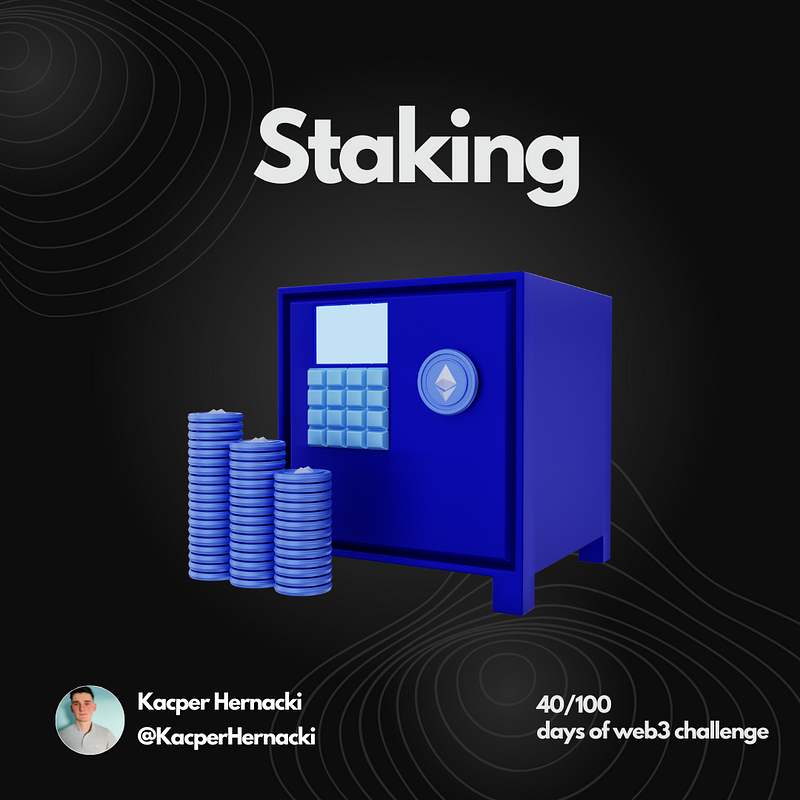What is staking
When it comes to understand proof of stake and entire ethereum 2.0 roadmap, it is necessary to know what is staking, how it can be used and…

When it comes to understand proof of stake and entire ethereum 2.0 roadmap, it is necessary to know what is staking, how it can be used and what gives it.
If you want to know answers for this questions, this material is for you.
Agenda:
- intro,
- definition,
- coins to stake,
- rewards,
- conclusion.
Definition
Staking is based on locking of assets for period of time (months or even years) so that it can be used to validate transactions in proof of stake consensus model.
In proof of stake model, coins have to be deposit to add blocks in the chain. Winners are selected randomly with increased probability which depends on amount of assets and how long are staked.
It not only have a lower carbon footprint, but decrease amount of coins in circulation, what causes natural deflation of cryptocurrency. It makes it worth more, not like in standard financial system, where currencies are slowly worth nothing.
If you want to know more about proof of stake, follow link below:
https://mobile.twitter.com/kacperhernacki/status/1546468490747559936?s=21&t=tgYWlYmW-g-K8vHOnrvkoQ
Coins to stake:
What is worth to mention, is that not every coins can be staken. It is possible to stake only coins natively circulated in PoS blockchains, like:
- Ethereum,
- Cardano,
- Solana.
Staking rewards
Overall, staking gives a lot of benefits. It can provide additional tokens, by increasing the individual stash of tokens. It is proceeded like in standard financial system but in decentralized way. Return can be defined on percentages of assets, given after period of time.
Conclusion
Staking is a fundamental part of proof of stake consensus model. It naturally causes deflation what can be very beneficial for participants and hodlers in a concrete network.




